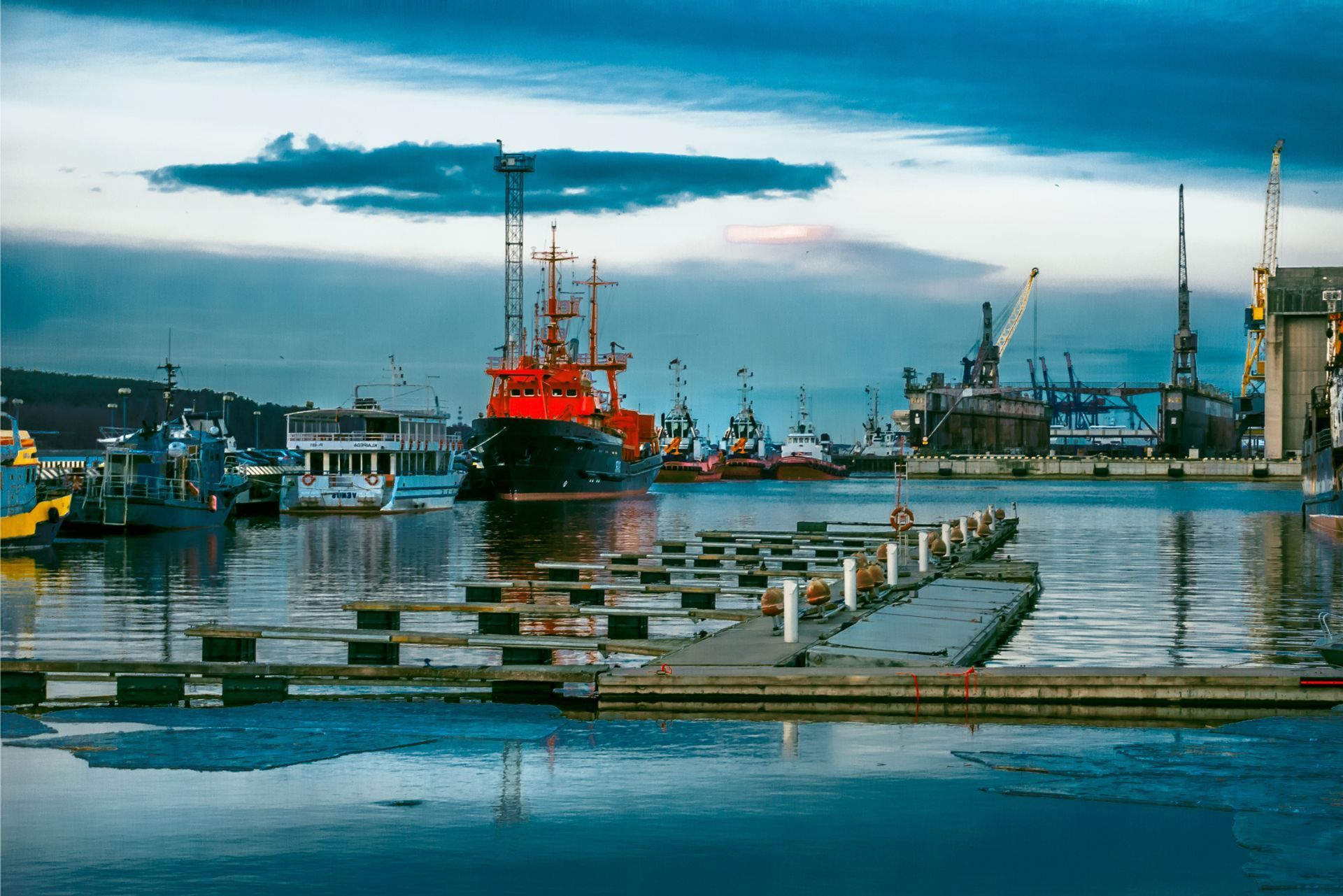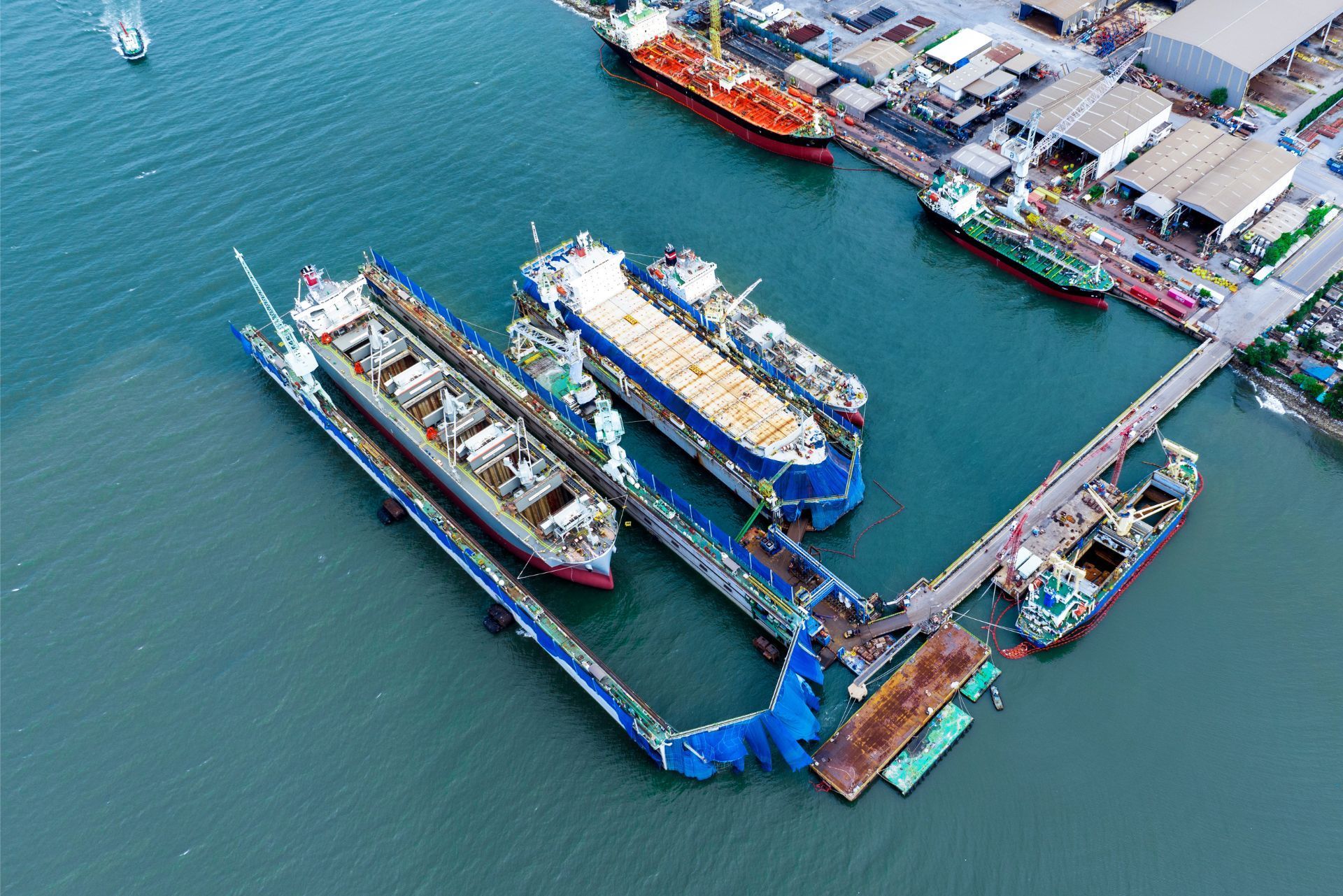Top 3 Recommended Policies

Inland marine insurance is a specialized form of coverage that protects goods, equipment, and property while they are in transit over land or while stored at a location other than the primary premises. Although the term "marine" might suggest a focus on watercraft, inland marine insurance is crucial for businesses in New York and beyond, where transportation of goods is a daily necessity. This article aims to provide a comprehensive overview of inland marine insurance in New York, including its benefits, types of coverage, and important considerations for businesses.
Understanding Inland Marine Insurance
Inland marine insurance is designed to cover a wide range of items, from construction equipment to fine art. Unlike standard property insurance, which typically covers items at a fixed location, inland marine policies offer broader protection for goods that are mobile or in transit. This type of insurance originated from the need to protect goods transported over water, but it has since evolved to encompass a variety of land-based risks, making it an essential component of many businesses' risk management strategies.
What Does Inland Marine Insurance Cover?
The coverage provided by inland marine insurance can vary significantly based on the specific policy and the needs of the insured. Common items covered include:
- Construction equipment and tools
- Goods in transit
- Fine art and collectibles
- Mobile equipment such as cranes and bulldozers
- Inventory stored off-site
Inland marine insurance is particularly beneficial for businesses that transport goods frequently or those that operate in industries where equipment is often moved between locations. This flexibility allows for peace of mind, knowing that valuable assets are protected regardless of their location. Additionally, businesses involved in logistics or shipping can greatly benefit from this coverage, as it helps mitigate the financial risks associated with loss or damage during transit. The ability to insure items at various locations also aids in maintaining operational continuity, as companies can quickly recover from unexpected incidents.
Types of Inland Marine Insurance Policies
There are several types of inland marine insurance policies available, each tailored to meet the unique needs of different businesses. Some of the most common types include:
- Transportation Insurance: Covers goods while they are being transported by truck, rail, or other means.
- Bailee Insurance: Protects businesses that temporarily hold someone else's property, such as repair shops or warehouses.
- Equipment Insurance: Covers mobile equipment used in construction, agriculture, and other industries.
Choosing the right type of policy is essential for ensuring comprehensive coverage. Businesses should evaluate their operations and the specific risks they face to determine the most appropriate inland marine insurance solution. Moreover, it's crucial for policyholders to regularly review and update their coverage as their business evolves. For instance, as new equipment is acquired or as the scope of operations expands, the need for additional coverage or adjustments to existing policies may arise. This proactive approach not only helps in maintaining adequate protection but also ensures that businesses are not caught off guard by unforeseen circumstances.

The Importance of Inland Marine Insurance in New York
New York is a bustling hub for commerce, with a diverse range of industries relying on the transportation of goods. From retail to construction, many businesses face unique risks associated with moving valuable property. Inland marine insurance plays a vital role in mitigating these risks.
Protecting Against Loss and Damage
One of the primary benefits of inland marine insurance is its ability to protect against loss or damage to goods while in transit. Whether due to theft, accidents, or natural disasters, businesses can face significant financial repercussions if their goods are damaged or lost. Inland marine insurance provides a safety net, ensuring that companies can recover their losses and continue operations without severe financial strain. This type of insurance is particularly crucial for businesses that transport high-value items, such as electronics or machinery, where the cost of loss could be devastating. Additionally, it covers not just the goods in transit but also those that are temporarily stored at locations other than the main business premises, offering a comprehensive layer of protection.
Compliance with Industry Regulations
Many industries in New York are subject to strict regulations regarding the transportation and storage of goods. Inland marine insurance can help businesses comply with these regulations by providing the necessary coverage for their operations. This not only protects the business but also enhances its reputation and credibility within the industry. For instance, construction companies often need to demonstrate that they have adequate insurance coverage to comply with local laws and regulations. Furthermore, having inland marine insurance can be a competitive advantage, as it assures clients and partners that the business is prepared for unforeseen events, thereby fostering trust and long-term relationships.
Flexibility in Coverage Options
Inland marine insurance is not a one-size-fits-all solution; it offers a variety of coverage options tailored to meet the specific needs of different businesses. Companies can choose from policies that cover specific types of cargo, such as fine art,
jewelry, or heavy equipment, allowing them to customize their coverage based on the unique risks they face. This flexibility is particularly beneficial for businesses that operate in multiple sectors or those that experience seasonal fluctuations in their shipping needs. Additionally, many insurers offer endorsements that can enhance the basic policy, such as
coverage for equipment breakdown or additional liability protection, ensuring that businesses can adapt their insurance as their operations evolve.
Key Considerations When Choosing Inland Marine Insurance
Selecting the right inland marine insurance policy requires careful consideration of various factors. Businesses should take the time to assess their specific needs and consult with insurance professionals to ensure they are adequately protected.
Assessing Risk Exposure
Understanding the risks associated with transporting goods and equipment is crucial when selecting an inland marine insurance policy. Businesses should evaluate factors such as:
- The types of goods being transported
- The frequency of transportation
- The distance goods are transported
- Potential hazards along the route
By thoroughly assessing risk exposure, businesses can choose a policy that provides appropriate coverage for their unique circumstances. Additionally, it is important to consider the mode of transportation being used, as different methods—such as trucking, rail, or air—may present varying levels of risk. For instance, goods transported by truck may be more susceptible to theft, while those shipped by air could be at risk of damage due to handling. Understanding these nuances can further refine a business's insurance needs and ensure comprehensive protection.
Evaluating Coverage Options
Not all inland marine insurance policies are created equal. It is essential to compare coverage options from different providers to find the most suitable policy. Key aspects to consider include:
- Coverage limits
- Deductibles
- Exclusions
- Additional endorsements or riders
Taking the time to evaluate these factors can help businesses avoid gaps in coverage and ensure they are adequately protected against potential losses. Furthermore, businesses should also look into the reputation and financial stability of the insurance provider. A company with a strong track record in claims handling and customer service can make a significant difference when it comes time to file a claim. Reading reviews and seeking recommendations from industry peers can provide valuable insights into which insurers are most reliable and responsive to their clients' needs.
Common Myths About Inland Marine Insurance
Despite its importance, there are several misconceptions about inland marine insurance that can lead businesses to overlook its benefits. Understanding the truth behind these myths is essential for making informed decisions.
Myth 1: Inland Marine Insurance is Only for Maritime Businesses
One of the most prevalent myths is that inland marine insurance is only relevant for businesses involved in maritime activities. In reality, this type of insurance is essential for any business that transports goods or equipment over land, regardless of the industry. Inland marine insurance covers a wide range of items, including construction equipment, fine art, and even goods in transit. This means that businesses in sectors such as construction, retail, and logistics can all benefit from this specialized coverage. The flexibility of inland marine insurance allows it to adapt to the unique needs of various industries, ensuring that valuable assets are protected during transit or while stored at a location away from the primary business premises.
Myth 2: Inland Marine Insurance is Unnecessary for Small Businesses
Another common misconception is that only large corporations need inland marine insurance. Small businesses, in fact, can greatly benefit from this coverage, especially if they frequently transport goods or equipment. Protecting valuable assets is crucial for businesses of all sizes. For instance, a small contractor who regularly moves tools and machinery to different job sites can face significant financial loss if those items are damaged or stolen. Furthermore, many small businesses may not realize that their general liability insurance does not cover losses related to goods in transit or specialized equipment. By investing in inland marine insurance, small business owners can safeguard their investments and ensure they have the financial support needed to recover from unforeseen incidents, thereby maintaining their operational continuity and reputation in the market.
How to Obtain Inland Marine Insurance in New York
Obtaining inland marine insurance in New York involves several steps. Businesses should approach the process methodically to ensure they secure the best coverage for their needs.
Consult with an Insurance Agent
The first step in obtaining inland marine insurance is to consult with a knowledgeable insurance agent or broker. These professionals can help assess the specific needs of the business and recommend suitable coverage options. They can also provide insights into the various insurers available in the market. An experienced agent will not only guide you through the complexities of policy options but also help you understand the nuances of coverage limits, exclusions, and endorsements that may be relevant to your operations.
Gather Necessary Information
When seeking quotes for inland marine insurance, businesses should be prepared to provide detailed information about their operations. This may include:
- Types of goods transported
- Frequency and distance of transportation
- Storage locations
- Value of equipment and goods
Providing accurate information will help insurers assess risk and provide appropriate coverage options. Additionally, businesses should consider documenting their transportation processes, including any safety measures in place, as this can further influence the underwriting process. For instance, having a robust tracking system for shipments or employing trained personnel can mitigate risks and potentially lower premiums. Furthermore, businesses should be aware that the nature of the goods being transported—whether they are high-value items, perishable goods, or hazardous materials—can significantly affect the type of coverage required and the associated costs.
Cost Factors for Inland Marine Insurance
The cost of inland marine insurance can vary widely based on several factors. Understanding these cost determinants can help businesses budget effectively for their insurance needs.
Value of Goods and Equipment
One of the primary factors influencing the cost of inland marine insurance is the value of the goods and equipment being insured. Higher-value items typically result in higher premiums, as the potential loss is greater. Businesses should carefully evaluate the value of their assets to ensure they are adequately insured. This evaluation process may involve appraisals or market research to determine the current value of items, especially for specialized equipment or unique goods that may not have a straightforward market price. Additionally, businesses should consider the depreciation of assets over time, as this can also affect the overall insurance costs.
Type of Coverage
The type of coverage selected also impacts the cost of inland marine insurance. Policies that offer broader coverage or additional endorsements may come with higher premiums. Businesses should weigh the benefits of comprehensive coverage against their budget constraints. For instance, a policy that covers loss due to theft, damage during transit, or natural disasters can provide peace of mind but may require a more significant financial commitment. Moreover, understanding the specific exclusions in a policy is crucial, as certain risks may not be covered, leading to potential out-of-pocket expenses in the event of a claim. It is advisable for businesses to consult with insurance professionals to tailor their coverage to their unique operational needs while remaining within their financial means.

Claims Process for Inland Marine Insurance
Understanding the claims process for inland marine insurance is essential for businesses to navigate potential losses effectively. Familiarity with the steps involved can help ensure a smoother claims experience. Inland marine insurance covers a wide range of property types, including goods in transit, specialized equipment, and even certain types of fine art. As such, the claims process can vary significantly based on the nature of the insured items and the circumstances surrounding the loss.
Reporting a Claim
In the event of a loss or damage, the first step is to report the claim to the insurance provider as soon as possible. Most insurers have specific guidelines for reporting claims, which may include:
- Providing detailed information about the incident
- Submitting supporting documentation, such as receipts or inventory lists
- Cooperating with any investigations conducted by the insurer
Prompt reporting is crucial, as delays can impact the claims process and potentially result in denied claims. Additionally, businesses should keep a record of all communications with the insurer, including dates, times, and the names of representatives spoken to. This documentation can be invaluable if any disputes arise during the claims process. Furthermore, understanding the specific time frames for reporting claims as outlined in the policy can help prevent any inadvertent lapses in coverage.
Claim Evaluation and Settlement
After a claim is reported, the insurance company will evaluate the claim and determine the appropriate settlement amount. This process may involve:
- Assessing the extent of the damage or loss
- Reviewing policy terms and coverage limits
- Negotiating the settlement amount with the insured
Understanding this process can help businesses set realistic expectations and prepare for potential negotiations with their insurer. It is also important to note that the evaluation may include the involvement of adjusters or specialists who can provide expert opinions on the value of the lost or damaged items. Businesses should be prepared to present their case clearly, including any evidence that supports their claim, such as photographs of the damage or expert appraisals. This thorough preparation can significantly influence the speed and outcome of the settlement process, ensuring that businesses receive fair compensation for their losses.
Conclusion
Inland marine insurance is a vital component of risk management for businesses in New York. By providing coverage for goods and equipment in transit, it helps mitigate financial losses and ensures compliance with industry regulations. Understanding the various types of coverage, assessing risks, and navigating the claims process are essential steps for businesses looking to protect their assets effectively.
As the landscape of commerce continues to evolve, the importance of inland marine insurance will only grow. Businesses should remain proactive in evaluating their insurance needs and seeking out the best coverage options to safeguard their operations and assets.
Contact Us
Phone
Location

